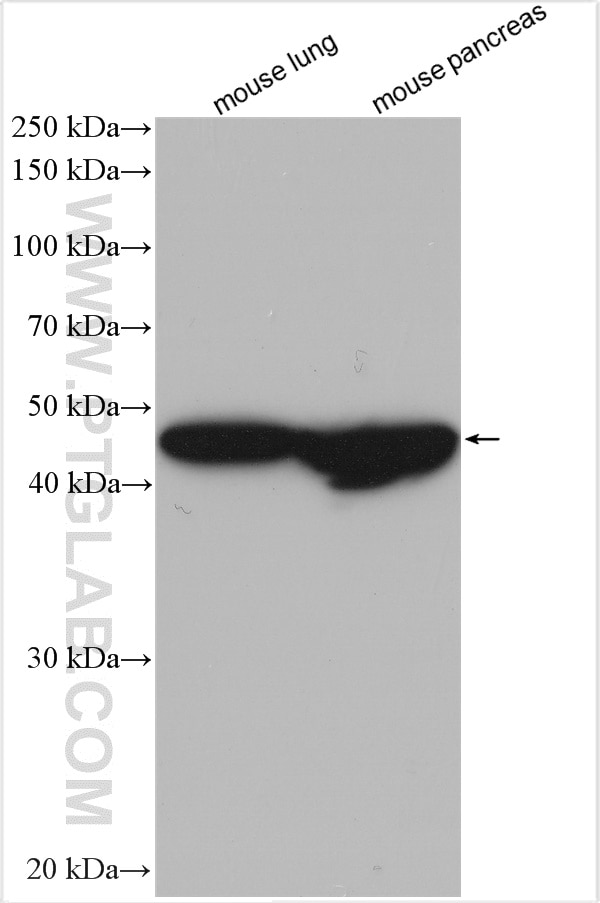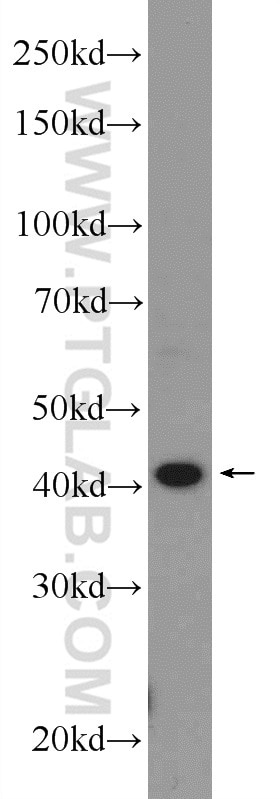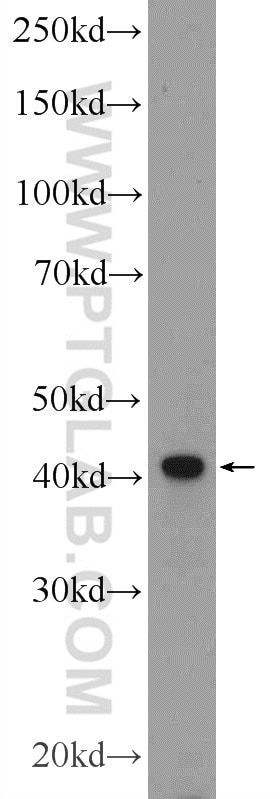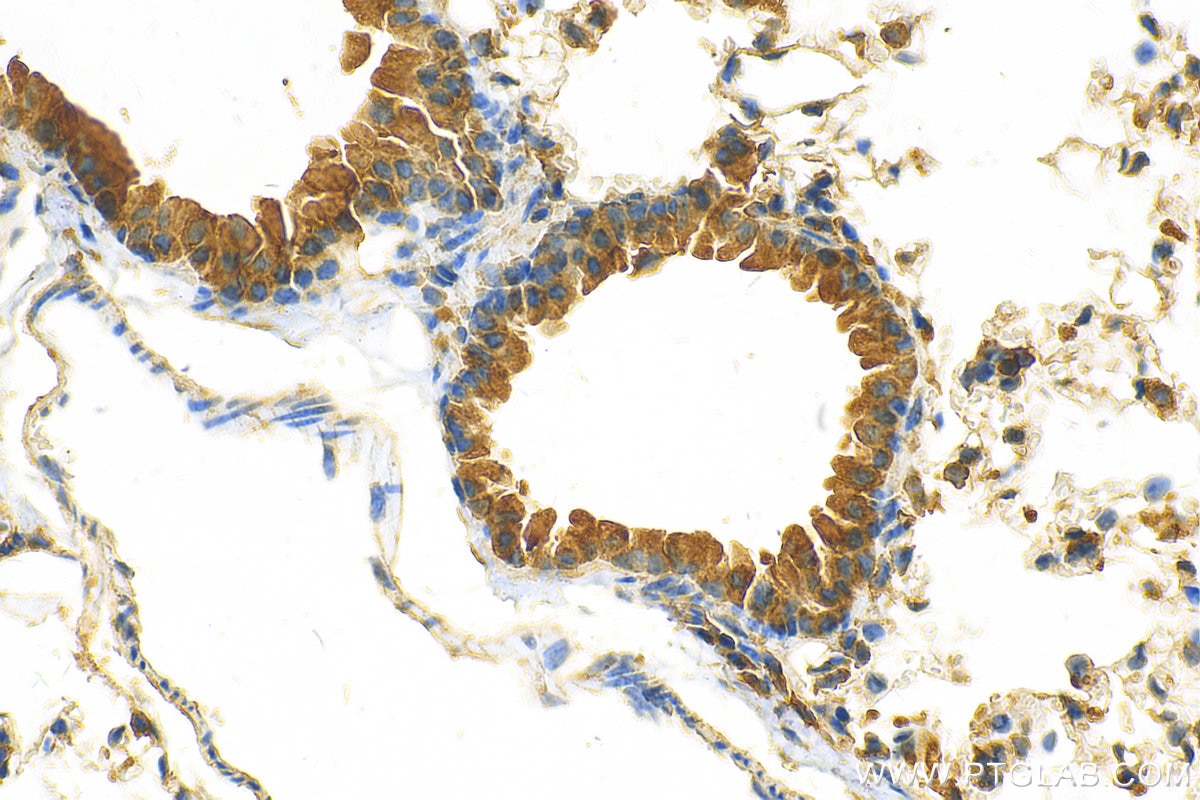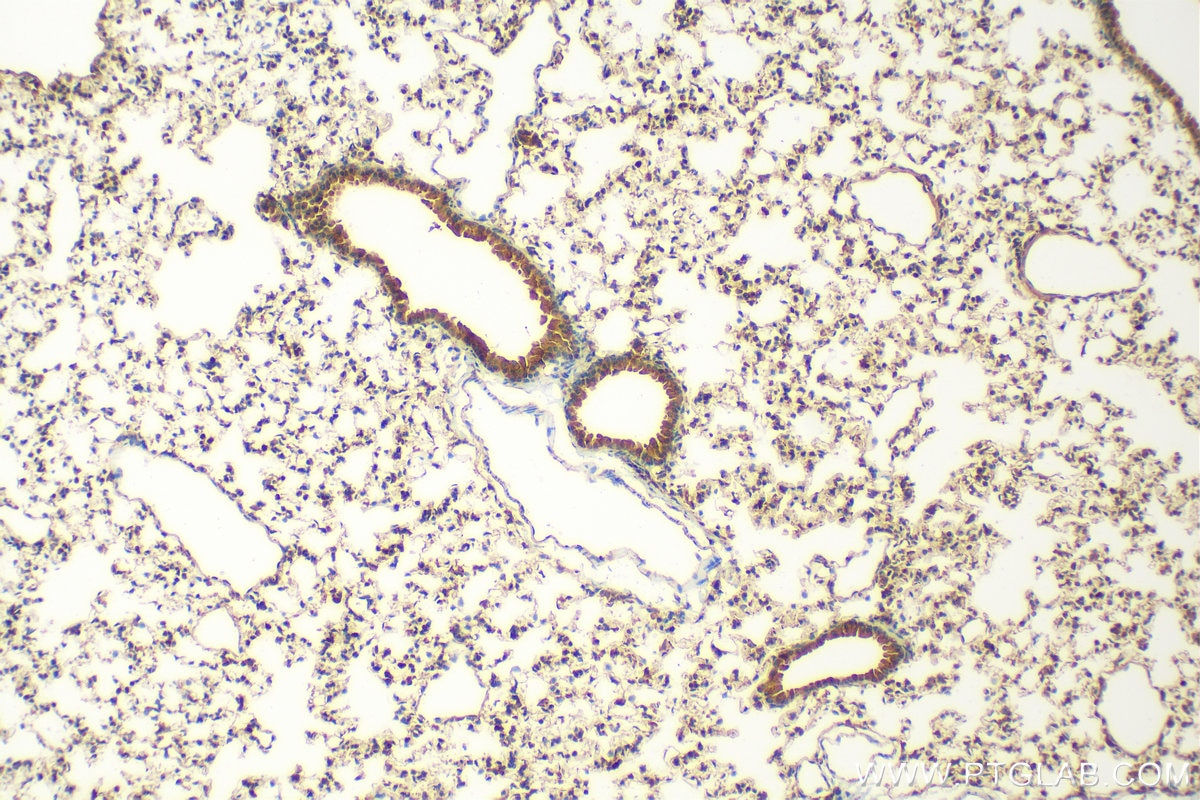Anticorps Polyclonal de lapin anti-F2RL3
F2RL3 Polyclonal Antibody for WB, IHC, ELISA
Hôte / Isotype
Lapin / IgG
Réactivité testée
Humain, souris
Applications
WB, IHC, ELISA
Conjugaison
Non conjugué
N° de cat : 25306-1-AP
Synonymes
Galerie de données de validation
Applications testées
| Résultats positifs en WB | tissu pulmonaire de souris, tissu pancréatique de souris |
| Résultats positifs en IHC | tissu pulmonaire de souris, il est suggéré de démasquer l'antigène avec un tampon de TE buffer pH 9.0; (*) À défaut, 'le démasquage de l'antigène peut être 'effectué avec un tampon citrate pH 6,0. |
Dilution recommandée
| Application | Dilution |
|---|---|
| Western Blot (WB) | WB : 1:500-1:2000 |
| Immunohistochimie (IHC) | IHC : 1:50-1:500 |
| It is recommended that this reagent should be titrated in each testing system to obtain optimal results. | |
| Sample-dependent, check data in validation data gallery | |
Applications publiées
| WB | See 4 publications below |
Informations sur le produit
25306-1-AP cible F2RL3 dans les applications de WB, IHC, ELISA et montre une réactivité avec des échantillons Humain, souris
| Réactivité | Humain, souris |
| Réactivité citée | Humain, souris |
| Hôte / Isotype | Lapin / IgG |
| Clonalité | Polyclonal |
| Type | Anticorps |
| Immunogène | F2RL3 Protéine recombinante Ag20801 |
| Nom complet | coagulation factor II (thrombin) receptor-like 3 |
| Masse moléculaire calculée | 385 aa, 41 kDa |
| Poids moléculaire observé | 41 kDa |
| Numéro d’acquisition GenBank | BC074782 |
| Symbole du gène | F2RL3 |
| Identification du gène (NCBI) | 9002 |
| Conjugaison | Non conjugué |
| Forme | Liquide |
| Méthode de purification | Purification par affinité contre l'antigène |
| Tampon de stockage | PBS with 0.02% sodium azide and 50% glycerol |
| Conditions de stockage | Stocker à -20°C. Stable pendant un an après l'expédition. L'aliquotage n'est pas nécessaire pour le stockage à -20oC Les 20ul contiennent 0,1% de BSA. |
Informations générales
Coagulation factor II receptor-like 3 (F2RL3) encodes a member of the protease-activated receptor subfamily, also known as protease-activated receptor 4 (PAR4), which takes partin platelet activation, intimal hyperplasia and inflammation (PMID:34284820). An absence of PAR4 in mouse models results in impaired hemostasis and a protection against pulmonary embolism, and a small number of missense coding variants in F2RL3 that alter platelet aggregation and function have been described(PMID:35012325). The calculated molecular weight and observed molecular weight of F2RL3 are both 41 kDa.
Protocole
| Product Specific Protocols | |
|---|---|
| WB protocol for F2RL3 antibody 25306-1-AP | Download protocol |
| IHC protocol for F2RL3 antibody 25306-1-AP | Download protocol |
| Standard Protocols | |
|---|---|
| Click here to view our Standard Protocols |
Publications
| Species | Application | Title |
|---|---|---|
Oxid Med Cell Longev Combination of Colchicine and Ticagrelor Inhibits Carrageenan-Induced Thrombi in Mice. | ||
Neurosci Bull Antagonism of Protease-Activated Receptor 4 Protects Against Traumatic Brain Injury by Suppressing Neuroinflammation via Inhibition of Tab2/NF-κB Signaling. | ||
Cells The Tumor Suppressor Par-4 Regulates Adipogenesis by Transcriptional Repression of PPARγ |
